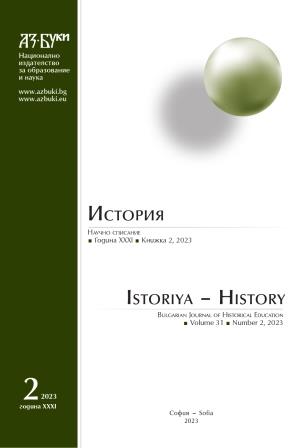Към корените на тюркско-иранския синтез: сведенията на османския историк Шюкруллах за произхода на българите
The Roots of the Turco-Iranian Synthesis: the Origin of the Bulgarians According to the Ottoman Historian Shukrullâh
Author(s): Delyan RusevSubject(s): History, Archaeology, Cultural history, Comparative history, Ethnohistory, History of ideas, Local History / Microhistory, Middle Ages, Special Historiographies:, 6th to 12th Centuries, Period(s) of Nation Building
Published by: Национално издателство за образование и наука „Аз-буки“
Keywords: Ottoman historiography; Shukrullâh; origin of the (Proto-)Bulgarians; Sasanian Iran; First Turkic Khaganate
Summary/Abstract: The origin and ethnogenesis of the (Proto-)Bulgarian tribes in the Early Middle Ages is a complex topic that has captured the imagination of many historians, medieval and modern alike. The present paper analyzes one relevant account from Bahjat al-tavârikh, a universal history in Persian composed in 1458 by the Ottoman scholar and diplomat Shukrullâh. This highly idiosyncratic but hitherto neglected account presents the Balkan Bulgarians (burjān, bulgatān) as descendants of the Sasanian shah Hormozd IV (r. 579 – 590) who allegedly spent some time in Byzantium (Rûm) while he was a prince. As Hormozd himself is said to have been born from the marriage of Khosrow I Anushirvan (r. 531 – 79) with the daughter of the khagan of the Turks, this legendary evidence seems to imply the mixed Turco-Iranian origin of the Bulgarians – a view shared by some modern researchers. The genesis of the account remains obscure, but contextual and historical analysis has shown that it was not invented by Shukrullâh, who only reproduced it from an unknown source probably dateable to the 8th – 11th centuries.
Journal: История
- Issue Year: 31/2023
- Issue No: 2
- Page Range: 144-162
- Page Count: 19
- Language: Bulgarian
- Content File-PDF

